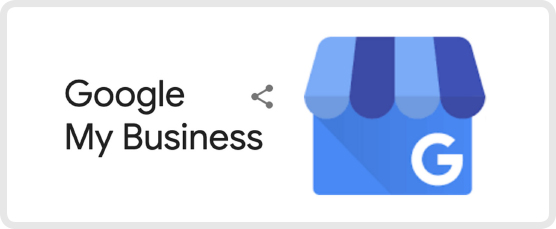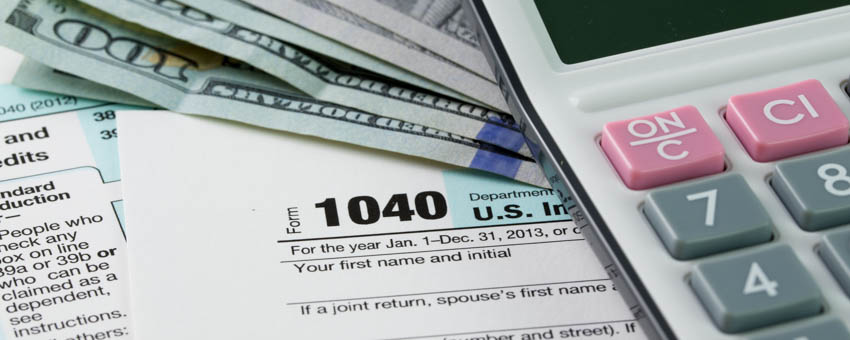4 Ways to Rank Higher on Google Maps
Updated on July 15, 2021Ranking well in local search engine results doesn’t come easy. If you’re looking for an affordable way to bring in more customers, Local Search Engine Optimization (SEO) is worth paying attention to.
There are tons of factors that go into Local SEO — many of which take years to master — but taking the four basic steps below will help to increase your local search engine rankings.
1. Claim and Optimize Your Google Business Profile Profile
Google Business Profile is THE most powerful tool you have as a business owner to manage your online presence and is a major part of how to rank in Google Maps.
This is why it’s so important to have control of, and to make sure everything is optimized to attract customers and let Google know what you’re all about.
Let me back up for a second, though. What even is a Google Business Profile profile?…
A Google Business Profile profile is the business information you see pop up when you search for something local, or for a specific business. It shows up as a box to the right of your Google search engine results page and is also the business information that comes up on Google Maps (which we refer to as the Local SEO Pack).
See PostcardMania’s Google Business Profile profile in the screenshot below.

Claiming Your Google Business Profile Profile
Just because you have a business doesn’t mean you have a Google Business Profile profile. Visit the Google Business Profile website, type your business name in, and see if a profile exists. If it does and you already have access to it, that’s great! Skip this step and focus on optimizing your existing profile.
However, even if a Google Business Profile profile does exist for your business, it doesn’t mean you already own it. If you Google your name and see that a Google Business Profile profile exists, you have to claim ownership of it and verify that you do in fact own this business before you can make any edits.
I know, this is a lot of information but I promise it’s important, so bear with me!
First, you need to check if a Google Business Profile profile exists for your business.
You can find your profile by either Googling your company name and location and clicking on “ Own this business?” on the profile. Or, visit Google’s official business search page, sign in to your Google account, and type in the name and address of your business to see if it comes up.
If you can’t find a profile for your business, you can create one by following these steps.
Follow the prompts to enter your business information and choose how you want to verify your business. Google will send a verification code to you via a postcard to your business address, or offer to call or email your business (they don’t always offer to call or email).
Note: you can not use a P.O. box to verify your business — you have to have a physical business address. If you don’t have a physical business location and operate out of your home, you can still use your home address to verify your business and hide that address from search results once your profile is live. It is always better to have a public business address, but hiding an address with a Google Business Profile profile is better than not having one at all!
Once your Google Business Profile profile is claimed and verified, you can start optimizing it!
Optimizing Your Google Business Profile Profile
Optimizing your profile is a big part of how to rank in near me searches, a crucial advantage for any small business.
Congratulations! You now have full control over your Google Business Profile profile.
But you’re not done just yet.
It’s important to add all of the information you possibly can, including:
- Relevant business category and subcategories
- Your full address, business name, and phone number (EXACTLY as it appears on your website)
- A link to your website’s home page
- Business hours (plus any special holiday hours)
- An engaging business description
- Eye-catching photos of your business including the exterior, interior, and photos of your staff. Never add stock photos to your Google Business Profile listing! This is against Google’s policy and, if they catch on, they’ll just take them down anyways
- Google Posts about new offers, services, or business updates
- Services or products if applicable (This won’t be applicable to every business, and they only show up on mobile search results, but it’s helpful to add if it applies to you)
Encourage Customers to Leave Google Reviews
Reviews are an important ranking factor for local SEO. Besides pleasing Google’s algorithm, positive reviews let potential customers know you’re an outstanding business with loyal customers. There are some review practices to follow for the best review rating possible:
1. Encourage customers to leave reviews via email
Reviews don’t come out of thin air, so how do you get previous customers to leave reviews?
If you already collect customer email addresses, great! You’ve gotten past step one. If you don’t, start collecting them so you can send out an email after their service.
Once a customer’s transaction with your business is complete, send a follow-up email asking them to leave a review for your business on Google. You can request for them to leave a review on any platform, such as Facebook or Yelp, but, unless you already have hundreds of five-star reviews on Google, I’d start there since it is a local SEO factor.
2. Encourage reviews without emails.
There are more ways to gather reviews than just sending out emails. Here are a few ideas:
- Use a QR code generator: all you need to do is paste the link to your Google, Facebook, or Yelp business page to generate a custom QR code. Print this code out and display it on your front desk, near the front door, or anywhere else customers will see it.
- Ask customers to leave a review in person. At the end of their service, you could just ask them on their way out!
- Frequently share links on your social media profiles to encourage previous customers to leave reviews on Google, Yelp, or Facebook.
- If your business already utilizes text messaging for appointment reminders, confirmations, or sign-up links, send out a link for them to leave a review after a recent appointment or transaction.
3. Respond to every single review
Business owner replies to reviews are another important factor of local SEO. Whether your customers leave reviews on Google, Facebook, Yelp, or any other platform, respond to every single one. Even if it’s just a quick ‘thank you,’ responding to reviews lets potential customers know you’re a highly responsive, caring business owner that takes time out of the day for its customers.
If you receive the dreaded negative reviews it’s even more crucial for the business owner to respond, but remain tactful. If it’s a past customer that really makes you angry or is making false claims, don’t respond immediately. Take a few minutes (or hours) to calm down and come back to respond to the review once you can reply with a level head.
To really take advantage of everything Google Business Profile has to offer, read this ultimate guide on how to optimize your Google Business Profile listing.
2. Localize Your Website
If you already have a website, great! If you don’t, now is the time to get one (guess what, we also offer affordable web design services!)
It’s not enough to just throw a website up and see what happens.
In order to rank well locally in search engine results, your website needs to be optimized for your specific area.
Let’s use a dentist’s website in Clearwater, Florida as an example.
Most dental websites have a services page that covers everything they offer. A main headline for this page will usually just say “Services”. For SEO purposes, a better headline would be something like “Dental Services in Clearwater, FL.” Throughout this web page, you should also add in location-specific information, such as the city or county name, throughout the text where it makes sense.
A few quick ways to localize your website:
- Make sure your address is in the footer of your website on every single page
- Clearly display your phone number on every page
- Include your location information in headlines throughout each page
- If you have multiple locations, create a page for each location and fill it with content specific to that area
- Create content about any local events, community partnerships, or charities you’re involved with
3. Make Sure Metadata Exists on Your Website
Including Metadata is a massive part of how to rank for local keywords, phrases search engines use from consumers to find your website.
Meta-what? We know, there’s a lot of confusing lingo tied to SEO but we promise it’s important. Metadata consists of a meta title and meta description — this title and description are what shows up in search engine results.
You know how whenever you Google something, you see the title of each web page and the preview of text that shows up underneath it? That’s the meta title and the meta description and it is controlled by the website owner.
If you don’t add your own metadata, Google will display random text from the web page. It’s important for you to control your metadata because this is the first impression potential customers have of our website while they’re browsing through search engine results.
Make sure your meta title and description are actionable, engaging, accurately describe the destination page, and include your location if you’re a local business.
Let’s use the home page of a dental website in Clearwater, Florida as an example.
A not-so-great meta title and description would be:
Title: Dentist | Home
Description: We’re here to help you! Call us today at 727-123-4567!
This doesn’t include location information, it’s too general, and it doesn’t make your business stand out. A better meta title and description would be:
Title: Cosmetic Dentistry in Clearwater, FL | Dr. John’s Dental Practice
Description: With over 25 years of experience, Dr. John gives patients the picture-perfect smiles they always dreamed of. Contact us today for a free consultation!
This is more specific: it contains the location, specifies the cosmetic dentistry specialization, and the description establishes the business’ authority based on experience, lets potential customers know what you can do for them, and provides an offer (free consultation!).
4. Build Local Backlinks
Building local backlinks is often an overlooked aspect and is a major part of how to improve a Google Business Profile listing.
A backlink is a link to your website from a different website. Backlinks are important because Google crawls the internet by following links, and more links equal more authority and trust.
Think of links like votes to your website — ranking well is more than a popularity contest, but if there are multiple websites linking to you instead of your competitors, Google will trust your site just a little bit more.
In general, it’s important to have backlinks. But for local businesses, it’s important to build local backlinks so users in your area can easily find your business on any local review site or business directory.
Links from business directories are called citations, and they usually give you the ability to list your business’ name, address, phone number, website, and write a little description about yourself. One of the most important factors of local SEO are these citations, AKA local backlinks.
Make sure your business has profiles with up to date information on the following websites:
- Yelp
- Bing Places for Business
- The Better Business Bureau (you don’t have to be BBB accredited to have a free listing on their website!)
- Angie’s List
- YellowPages
Also, make sure your business is listed on relevant local and niche directory websites, too. This will vary depending on where you’re located and what your industry is.
To find the business directories relevant to your area and business niche, Google “business type in city, state”. For example, if I was a dentist in Clearwater, Florida trying to figure out which business directories would be most important, I would Google “dentist in Clearwater, Florida.”
Most of the time there are business directories ranking on the first page of search results for keywords like this, so make sure you’re listed on all of those!
A few examples include:
- Your local chamber of commerce website
- Healthgrades.com for dentists and doctors
- Justia.com for lawyers
- Care.com for services such as housecleaning and in-home medical care
Feeling overwhelmed yet?
I know, it’s a LOT and these are just three of the first steps your business needs to take. Fully optimizing your business for SEO has so many additional factors and is an ongoing process.
While we can’t teach you everything you need to know about SEO with one blog post, we can give you a solid place to start.
Luckily, PostcardMania just launched an affordable Local SEO Service to help you with all of the items listed above and way more!
If you have any questions, feel free to contact one of our marketing experts or call us at 800-628-1804.
Or, you can always email me directly at joy.gendusa@postcardmania.com.
Best,
Joy









